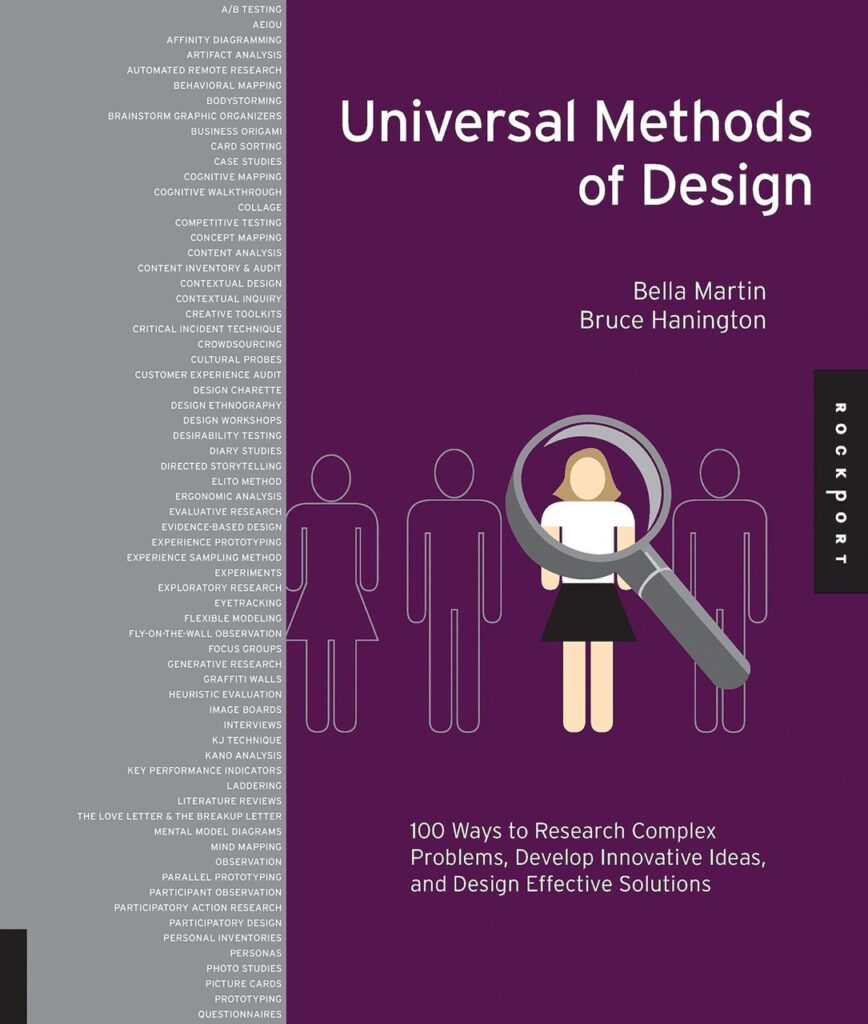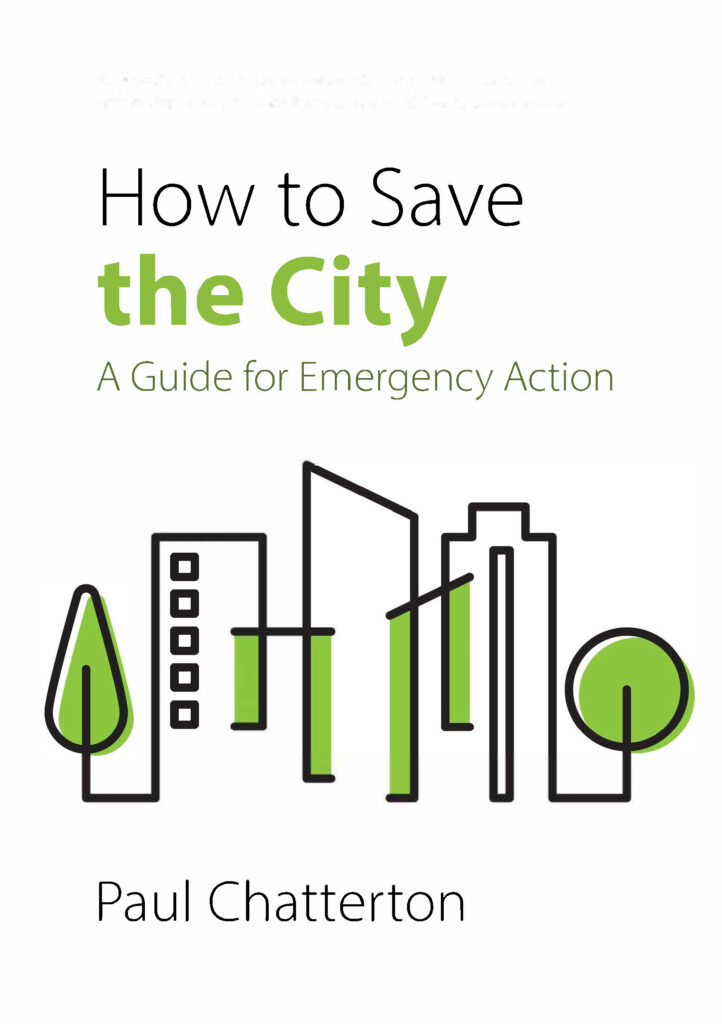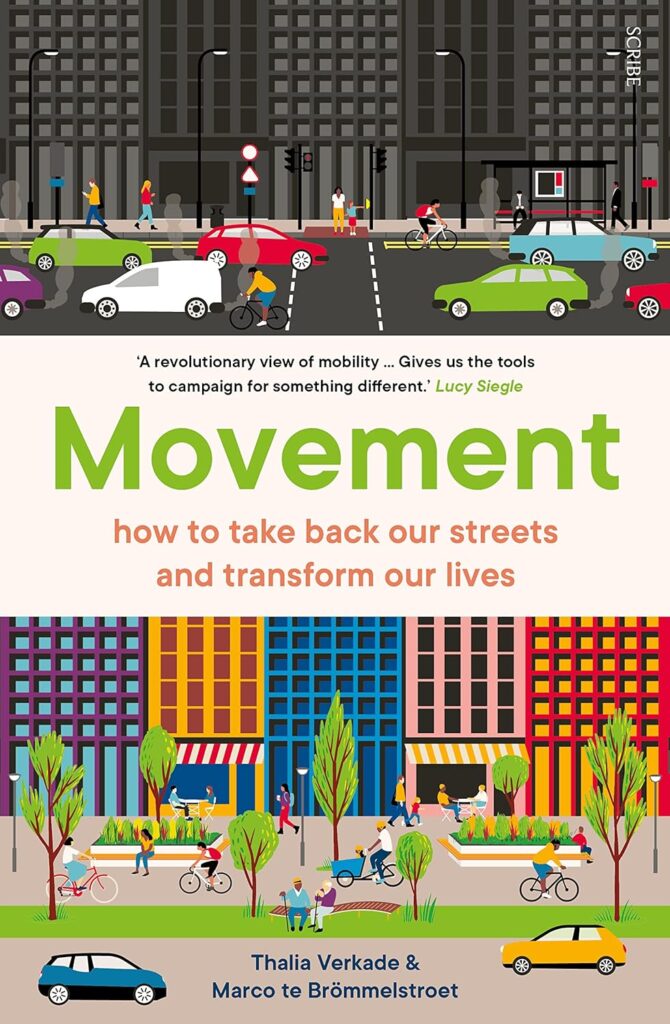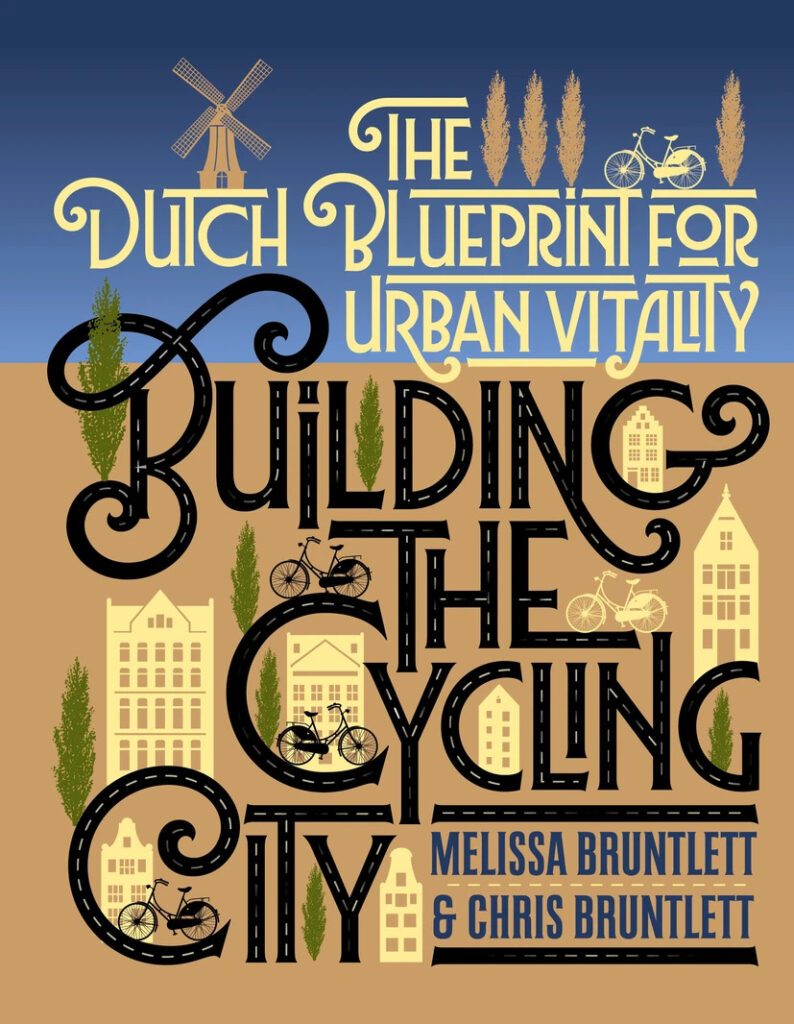
What is it about?
Universal Methods of Design (Martin & Hanington, 2012) bundles 100 methods into an accessible and organized reference book to learn about people and design things that work for them. The authors claim that “this is not just a book about methods of design… we believe that the power of the methods and techniques included in this book is that each provides an opportunity to structure conversations that can help us better understand and empathize with people” (Martin & Hanington, 2012, p. 6). I find it to be both: a practical reference on design research methods with potential for readers to take in many directions.
The main building block of the book consists of two page layouts for each method with concise descriptions, visuals, an indication of where it fits into the design process, what kind of method it is, and further reference. The methods are organized alphabetically for quick reference. In them, design meets social science- anyone with the idea that design stops at the visual will have their eyes opened.
Social science researchers will recognize methods such as questionnaires, interviews, participant observation, and (design) ethnography. These academics may find the design methods less thorough than their social science counterparts. While social scientists go into more depth in the research, the design process incorporates multiple broader methods together and in the end informs a design.
What approach does it take?
Martin & Hanington take a practical approach: this is clearly intended to be a reference book, not a narrative. Does that mean it is boring? In my opinion, absolutely not- it is loaded densely with information and visuals across its approximately 200 pages. If the thought of 200 pages scares you off, the information is presented in a very accessible way, and each 2 page method spread can be read on its own. If 200 pages sounds like not enough for you, or you are already an expert in the subject matter, perhaps this is a book you could reference occasionally to refresh your ideas on a given method. Overall, the authors have many use cases covered and they blend a professional approach with an academic and a popular one.
Who might be interested in this book?
Urban designers, citizen researchers and advocates could all be interested in this book to use it to learn about (members of) a community and develop bikeway designs. Practitioners already familiar with the field can use it as a reference and explanatory tool to other stakeholders, while people new to the methods can gain an overview and broad exposure. Interested citizens and advocates can learn about how to understand people’s contexts and design with the end users in mind, which will lead to more productive conversations with practitioners. For everyone these methods are a mean, not an end. By thinking of them in the cycling context, they can help you ask questions about how to make more humanly informed cycle infrastructure and help facilitate deeper thinking about people.
Further details
- Academic disciplines: Design, social science
- Geographical scope: Generalizable methods/insights
- Relation to cycling: Cycling may not even be mentioned in the whole book, but the methods inside it are a framework to learn more about people and incorporate that knowledge into the design of cycling infrastructure. While not all of the methods in the book are relevant for the cycling context, many of them are applicable.
- Reference (APA): Martin, B., & Hanington, B. M. (2012). Universal methods of design: 100 ways to research complex problems, develop innovative ideas, and design effective solutions. Beverly, MA: Rockport Publishers.



